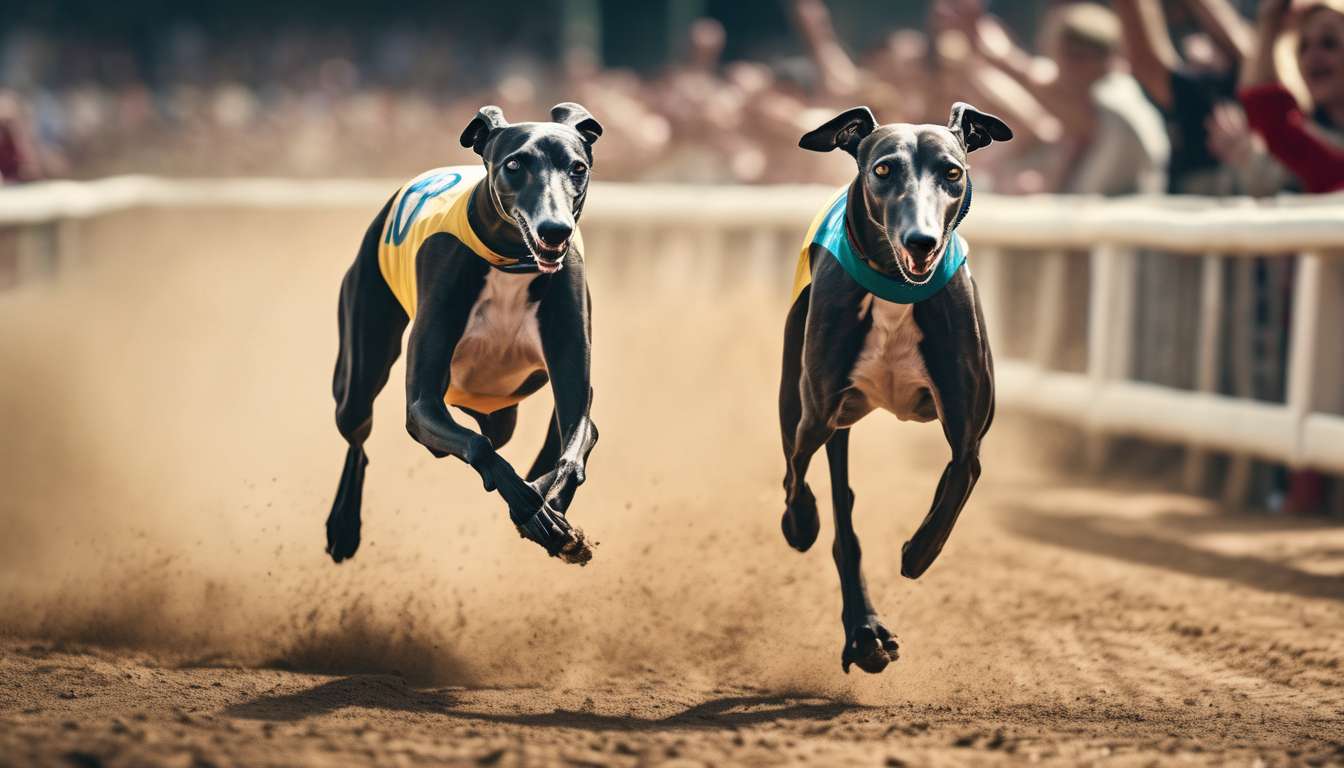In the exhilarating world of dog racing, we’ve often found ourselves caught up in the thrill of the chase, eagerly placing our bets in hopes of striking it big. However, as seasoned enthusiasts and occasional gamblers alike, navigating the complexities of dog betting predictions isn’t always straightforward.
Over time, we’ve all stumbled upon certain pitfalls that can lead to disappointing outcomes. That’s why we’ve decided to compile a list of the top 10 mistakes we’ve collectively made while trying to predict the outcomes of these heart-pounding races. By sharing our experiences and insights, we hope to help each other avoid these common errors and improve our betting strategies.
Together, we’ll explore the misconceptions and oversights that can mislead even the most seasoned bettors. In doing so, we’ll enhance our understanding and enjoyment of this thrilling pastime.
Top 10 Mistakes in Dog Betting Predictions:
-
Overrating a dog’s past performance without considering current form.
-
Ignoring the significance of track conditions and weather.
-
Failing to research the dog’s trainer and kennel history.
-
Betting based solely on odds without deeper analysis.
-
Overlooking the importance of the dog’s running style and distance preference.
-
Neglecting to consider the health and fitness of the dog.
-
Relying too heavily on tips and rumors without verification.
-
Mismanaging betting budgets and chasing losses.
-
Underestimating the impact of a dog’s starting position.
-
Forgetting to review post-race analyses to improve future predictions.
By being mindful of these common mistakes, we can refine our strategies and enjoy a more rewarding betting experience in the exciting world of dog racing.
Overrating Past Performances
One common mistake in dog betting predictions is overrating a dog’s past performances without considering current form or changes in conditions.
We might look at a dog’s impressive track record and feel confident about placing our bets, but it’s important to remember that past glory doesn’t guarantee future success.
Track conditions can vary greatly, affecting a dog’s running style and performance. It’s crucial to assess whether a dog thrives in wet conditions or struggles on a hard track. Ignoring these factors can quickly deplete our betting budgets.
Moreover, focusing solely on past achievements can lead us to overlook recent changes in a dog’s training or health, which might significantly impact its performance.
To make more accurate predictions, consider the following:
- Stay informed about current conditions and trends.
- Adapt your strategies based on recent information.
- Share insights with others to support smarter betting decisions.
Together, by avoiding these common pitfalls, we can improve our chances of success.
Ignoring Track Conditions
Understanding Track Conditions in Dog Racing
We often make the mistake of overlooking how varying track conditions can dramatically influence a dog’s performance and betting outcomes. In our community of dog racing enthusiasts, understanding track conditions is crucial for making informed betting decisions.
Impact of Track Conditions
- Track conditions like dry, muddy, or wet surfaces can significantly impact a dog’s running style and ultimately, our betting success.
- Different dogs excel in specific conditions:
- Some dogs thrive in the mud, using their powerful running style to push through with ease.
- Others might struggle, affecting our carefully planned betting budgets.
Betting Strategy
By paying attention to track conditions, we can better predict which dogs have the advantage on race day. This insight helps us make smarter bets, optimizing our betting budgets and boosting our confidence within our tight-knit community.
Conclusion
Let’s remember: track conditions aren’t just a detail—they’re a vital part of our betting strategy. Ignoring these conditions might lead to unnecessary losses and frustration.
Neglecting Trainer Research
Many of us underestimate the importance of researching trainers when placing bets on dog races. We often focus on the dogs themselves, overlooking the crucial role trainers play in preparing them for various track conditions. A trainer’s expertise can refine a dog’s running style, making them more adaptable and competitive. By neglecting trainer research, we miss out on key insights that could influence our betting decisions and ultimately affect our betting budgets.
Let’s consider how trainers adapt their strategies based on track conditions:
- Some trainers excel in preparing dogs for wet tracks.
- Others might specialize in training for dry, fast surfaces.
Understanding these nuances helps us align our bets with the strengths of the trainers, potentially increasing our chances of success.
Furthermore, trainers often have a signature running style they instill in their dogs, which could be a game-changer. By integrating trainer research into our betting strategy, we not only enhance our community’s knowledge but also make more informed decisions.
Solely Betting on Odds
Relying solely on odds without considering other factors can lead us to overlook valuable insights that might enhance our betting strategies.
Key Considerations Beyond Odds:
-
Track Conditions: Ignoring track conditions, such as whether it is wet or muddy, can dramatically influence a dog’s performance. Some dogs may excel in these conditions, while others might struggle. By not factoring in these conditions, we’re potentially betting blind.
-
Betting Budgets: Taking odds at face value might tempt us to place larger bets, believing the odds reflect a sure thing. Without a well-rounded strategy that considers multiple variables, we risk overspending and chasing losses.
Benefits of a Holistic Approach:
-
Informed Decision-Making: By evaluating all aspects, including track conditions and budget management, we can make more informed decisions.
-
Community and Strategy: Being part of a community that values careful analysis and strategic betting can prevent us from falling into the trap of overspending and can foster a shared sense of success and belonging.
In essence, embracing a holistic approach helps us make smarter bets and enhances our overall betting experience.
Overlooking Running Style
Many bettors underestimate how a dog’s running style can significantly impact race outcomes. We often get caught up in the excitement of the odds and potential payouts, forgetting that each dog has a unique way of navigating the track. Whether they prefer to lead from the front or come from behind, these tendencies are crucial to predicting their performance.
Track conditions also play a big role. A dog’s running style might shine on a dry track but falter when it’s wet or muddy. By understanding these nuances, we can make more informed decisions and stretch our betting budgets further.
As a community, we thrive on making smart choices together. So, let’s not overlook the importance of running style in our predictions.
We can share insights and strategies to enhance our collective success. By doing so, we not only improve our chances of winning but also strengthen the bonds that unite us as passionate bettors.
Ignoring Dog’s Health
Many bettors often overlook a dog’s health, yet it’s a critical factor that can dramatically impact performance on race day. It’s essential to consider not just a dog’s past victories or running style, but also its current physical condition.
A slight injury or recent illness can turn a promising contender into an underperformer, regardless of favorable track conditions. Ignoring these health aspects could lead to costly misjudgments, affecting our betting budgets.
To make informed betting decisions:
- Ensure you are informed about a dog’s health status before placing any bets.
- Regularly check for updates on any health issues.
- Consider how health can affect a dog’s performance under different track conditions and running styles.
By doing so, we create stronger predictions and feel more connected to a community that values informed decisions.
Prioritizing health not only enhances our betting strategies but also aligns us with a group of bettors who emphasize responsible and strategic betting practices.
Relying on Unverified Tips
Many of us fall into the trap of relying on unverified tips, which can lead to misguided bets and disappointing outcomes. It’s easy to trust a so-called insider tip, especially when we’re eager to belong to the savvy betting crowd. However, when these tips aren’t backed by solid data, we risk making decisions that don’t align with reality.
Track conditions can drastically change a race’s dynamics, and a tip that doesn’t consider this can mislead us.
Let’s focus on what we can verify:
-
Understand a dog’s running style and how it matches up with current track conditions. This approach ensures our decisions are grounded in facts rather than hearsay.
-
Stick to informed strategies to help protect our betting budgets, avoiding temptation to overspend based on unverified tips.
By prioritizing verified insights, we can make smarter choices and foster a community where we all thrive in our pursuits.
Mismanaging Betting Budgets
Avoiding Overspending in Betting
Many of us fall into the trap of overspending when we don’t set strict limits on our betting budgets. It’s easy to get caught up in the excitement of the race, especially when we’re surrounded by fellow enthusiasts who share our passion. Without a solid plan, we risk losing control and endangering our financial stability.
Managing Betting Budgets Effectively
To manage our betting budgets effectively, we need to consider several factors:
- Track conditions
- A dog’s running style
Understanding how these elements influence race outcomes helps us make informed decisions and avoid placing reckless bets.
Influence of Track Conditions and Running Style
- Track conditions can vary greatly, affecting a dog’s performance.
- A dog’s running style can determine its ability to adapt and compete on different tracks.
By carefully analyzing these aspects, we can approach betting with a strategy that aligns with our financial goals.
Staying Connected and Making Smarter Choices
This way, we stay connected with our community, sharing insights and experiences without compromising our financial well-being. Let’s make smarter choices and enjoy the thrill responsibly.
How do external factors like weather conditions impact dog race outcomes?
Weather conditions greatly influence dog race outcomes.
Rain can create muddy tracks, affecting a dog’s speed and agility.
Hot weather may tire out dogs faster, impacting their performance.
Wind can also be a factor, affecting a dog’s ability to maintain a straight line.
By considering these external factors when placing bets, we can:
- Increase our chances of making more accurate predictions.
- Ultimately, win more bets.
What role does a dog’s breed play in its racing performance?
When it comes to a dog’s racing performance, the breed can have a significant impact.
Different breeds may excel in specific types of races, such as sprints or endurance events. Factors like size, build, and natural instincts unique to each breed can influence how well a dog performs on the track.
Understanding these breed-specific traits can help us make more informed predictions about which dogs are likely to succeed in racing.
Key factors to consider include:
- Size: Larger breeds may have more power and speed, while smaller breeds might excel in agility.
- Build: The physical structure, such as muscle mass and leg length, plays a role in a dog’s racing capabilities.
- Natural Instincts: Some breeds have inherent traits that make them more suited for certain types of races.
By considering these elements, one can better predict and enhance a dog’s racing success.
How can I find reliable sources for dog racing statistics and data?
We can find reliable sources for dog racing statistics and data by following several key steps:
-
Check Reputable Websites:
- Look for websites specifically dedicated to greyhound racing.
- Ensure these sites are known for their accuracy and reliability.
-
Consult Industry Publications:
- Read publications that focus on greyhound racing for in-depth analysis and statistics.
-
Follow Official Organizations:
- Keep track of updates and data released by official greyhound racing organizations.
Verify Source Credibility:
- It’s essential to verify the credibility of the sources we use. This ensures that the information we rely on is accurate and dependable.
Stay Updated:
- By doing our research and staying informed with the latest statistics, we can enhance our ability to make successful predictions in dog racing.
Following these steps will help improve our chances of making informed betting decisions.
Conclusion
In dog betting, avoid these common mistakes to improve your predictions:
-
Overrating Past Performances: While past performances can provide insight, it’s important not to rely solely on them, as conditions can change.
-
Ignoring Track Conditions: Different tracks can favor different dogs. Always consider the track conditions before placing a bet.
-
Neglecting Trainer Research: Understanding a trainer’s track record and training style can provide valuable insights.
-
Solely Betting on Odds: Odds are important, but they shouldn’t be the only factor in your decision-making process.
-
Overlooking Running Style: A dog’s running style can greatly affect its performance on certain tracks.
-
Ignoring the Dog’s Health: Always check the dog’s health status, as injuries or illnesses can impact performance.
-
Relying on Unverified Tips: Be cautious of tips from unverified sources, as they can be misleading.
-
Mismanaging Betting Budgets: Effective bankroll management is crucial. Set a budget and stick to it to avoid unnecessary losses.
By being mindful of these pitfalls, you can make more informed decisions and increase your chances of success in dog betting.




